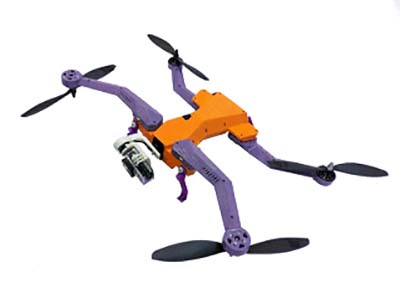New rules regulating the use of remotely-piloted aircraft systems – colloquially known as drones – are now firmly in effect after having been signed by the Minister of Transport.
“The regulations governing the use of drones in South Africa are welcome because they bring clarity,” says Philip Smerkovitz, MD of TeleEye SA, a distributor of FLIR thermal imaging systems and DJI gimbals designed to be bolted-on to drones.
These imaging systems use state-of-the-art infrared technologies that detect infrared radiation, or heat, enabling the drone operator to see in total darkness, and all weather conditions. With simple power-in and video-out connections, and MAVlink (Micro Air Vehicle link) compatibility, it’s easy to integrate FLIR Vue thermal imaging systems onto drones and get flying.
Smerkovitz explains that the promulgation of the RPA regulations last year means it is now impossible to fly drones near National Key Points without prior permission. A current list of National Key Points is available on the web and is maintained by the Right2Know campaign.
The good news, according to TeleEye SA, is that it is completely legal to use drones on private property, for search and rescue, firefighting, security, agriculture, roof and solar panel inspections, aerial surveys and photography, and a host of other applications.
Drones cannot, however, be flown within 50m above or close to a person or crowd of people without prior approval. This has obvious implications for crowd control applications and sporting events.
Drone operators should be aware that they need to have a Civil Aviation Authority (CAA) approved remote pilot licence and a letter of approval which is valid for 12 months.
In addition, drones cannot fly more than 120m above the ground, nor within in 10km of an aerodrome. That’s an airport for those of us born after 1970. Interestingly, while the rules also stipulate that visual contact must be maintained with the drone, this doesn’t apply to night operations.

